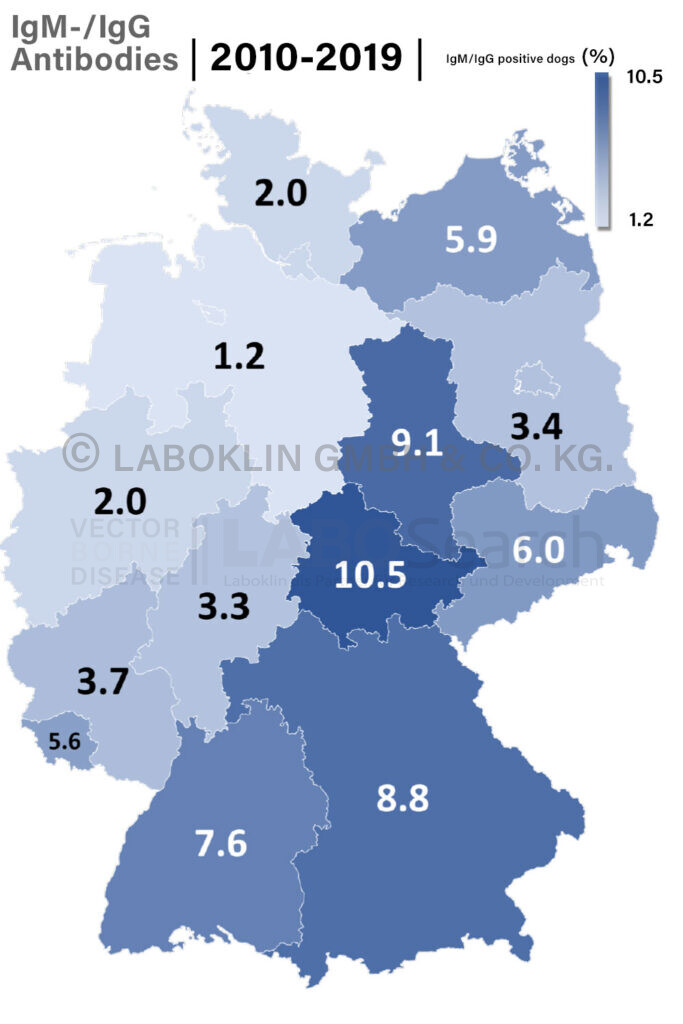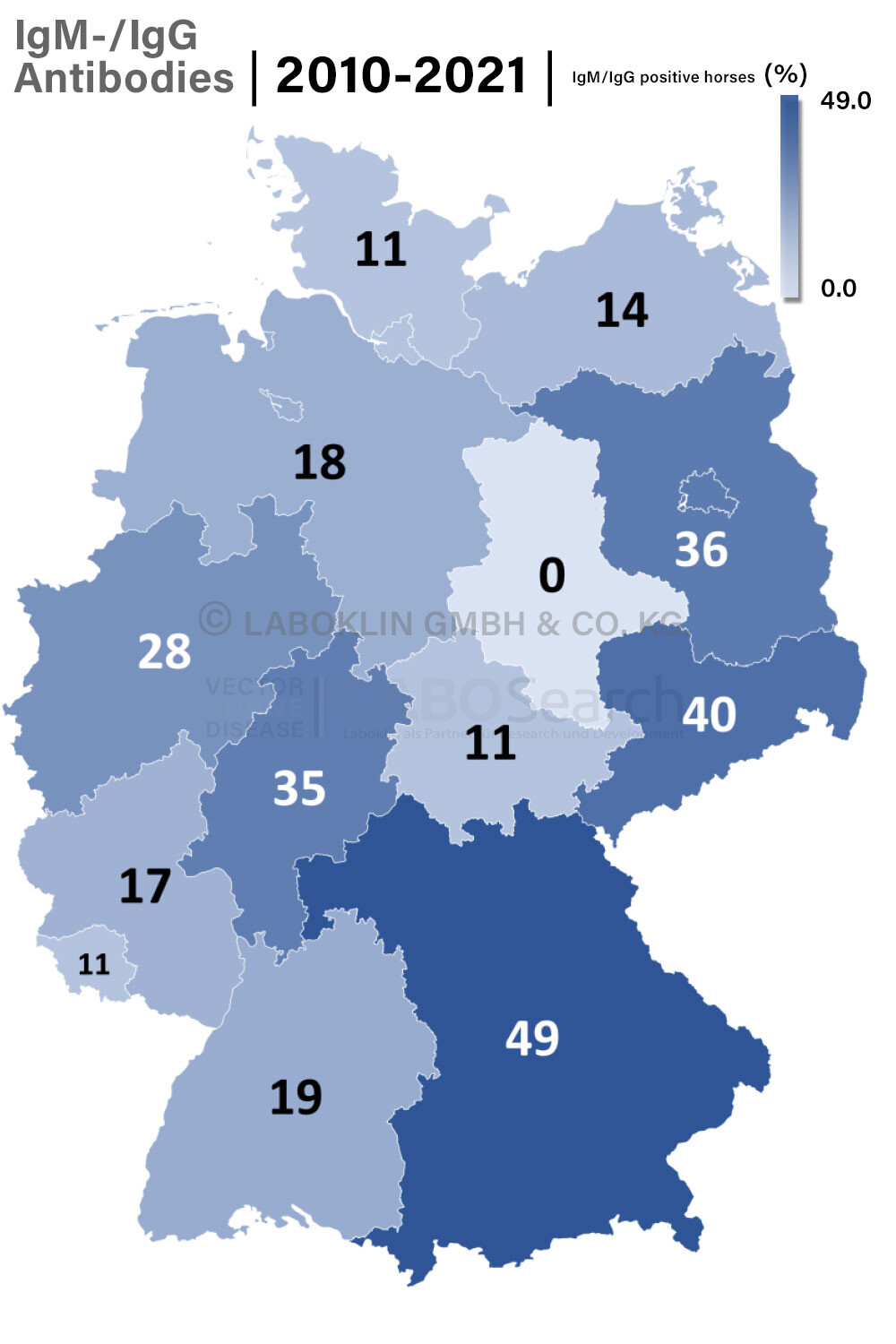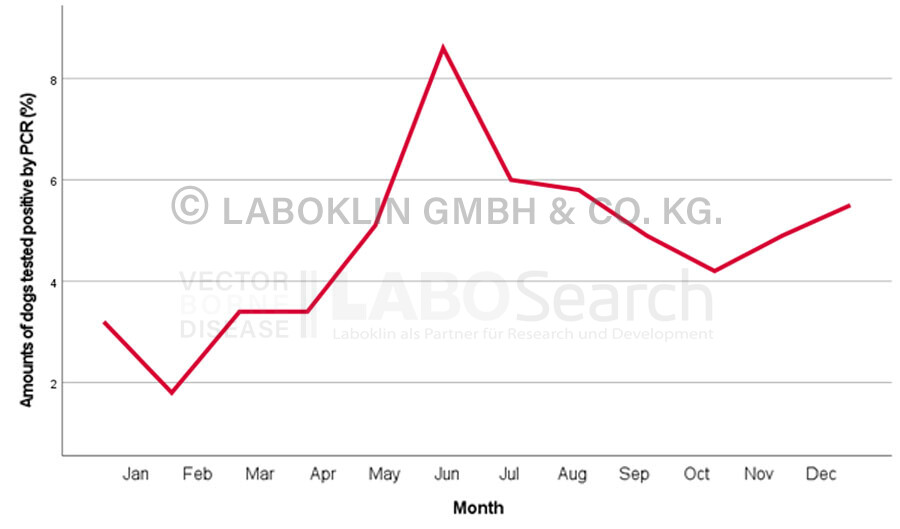- Disease: tick-borne encephalitis
- Viral disease due to Falvivirus infection
- Species: for example dogs, cats and horses
- One of the most important tick-borne diseases in human medicine
- Mainly transmitted by Ixodes ricinus ticks in Germany
- In human medicine, defined high-risk areas
- No specific antiviral drug available
- Direct detection methods
- PCR
- Indirect detection methods are not available in routine diagnostics
- Virus neutralization test (golden standard)
- IgG-ELISA (positive about 4 weeks post infection)
- IgM-ELISA (positive about 2 weeks post infection)
- Fever and neurological signs as the most prominent clinical signs
- Subclinical to peracute-lethal
Amounts of positive tested animals at LABOKLIN (Bad Kissingen, Germany)
Species | Timeframe | PCR | IgM/IgG ELISA |
Dog | 2010-2020 | 1% | 5.0% |
Cat | 2010-2019 | 0% | 0% |
Horse | 2010-2021 | 0% | 31.0% |
Dog (2010 – 2023, N> 5.000)
Timeframe | PCR | IgM/IgG ELISA |
2022-2023 | 0.5% | 17.7% |
2018-2020 | 1.1% | 9.5% |
2015-2017 | 1.7% | 2.5% |
2010-2014 | 0% | 4.9% |
Horse (2010 – 2023, N> 500)
Timeframe | PCR | IgM/IgG ELISA |
2022-2023 | 0% | 34.8% |
2018-2021 | 0% | 32.3% |
2015-2017 | 0% | 21.4% |
2010-2014 | 0% | 8.3% |




